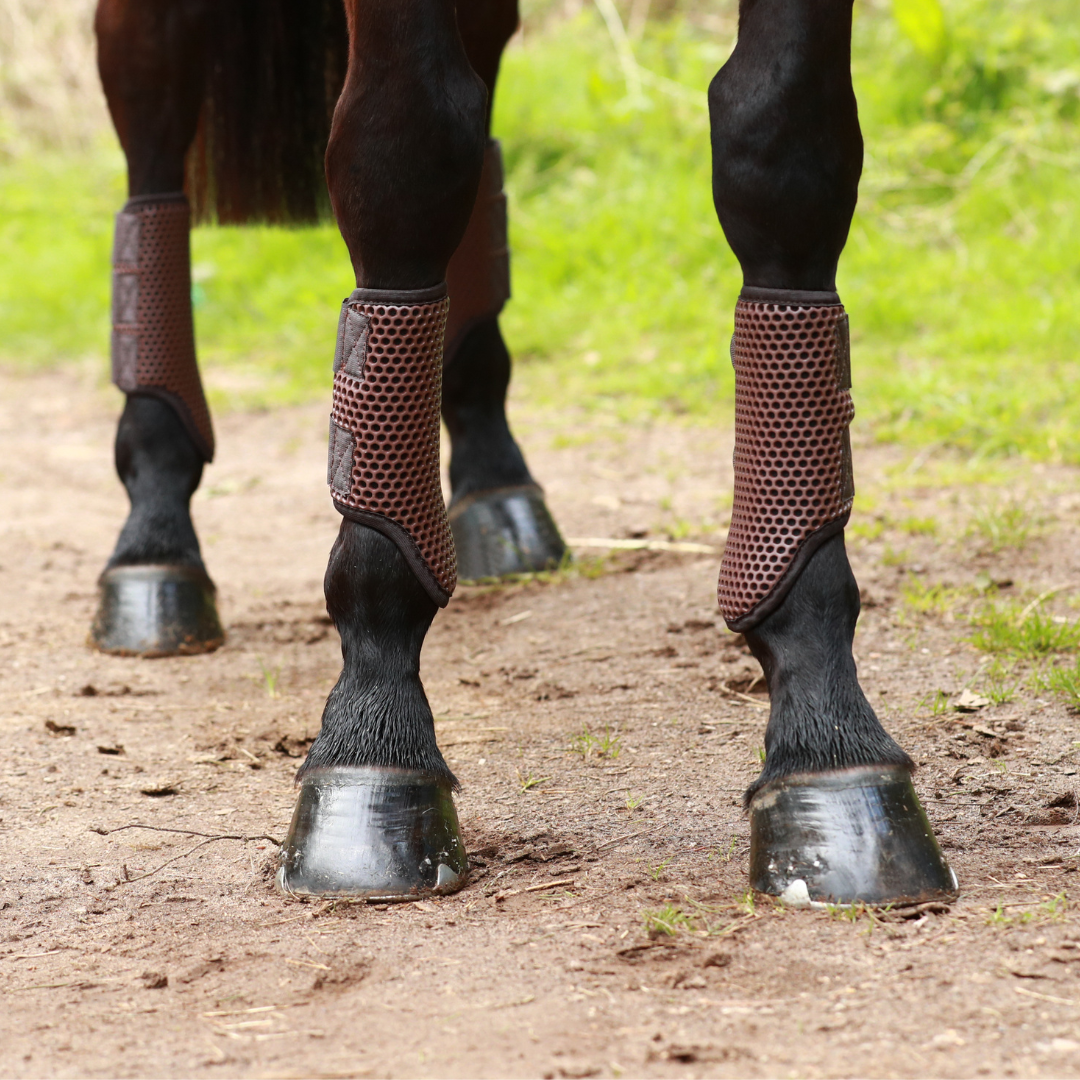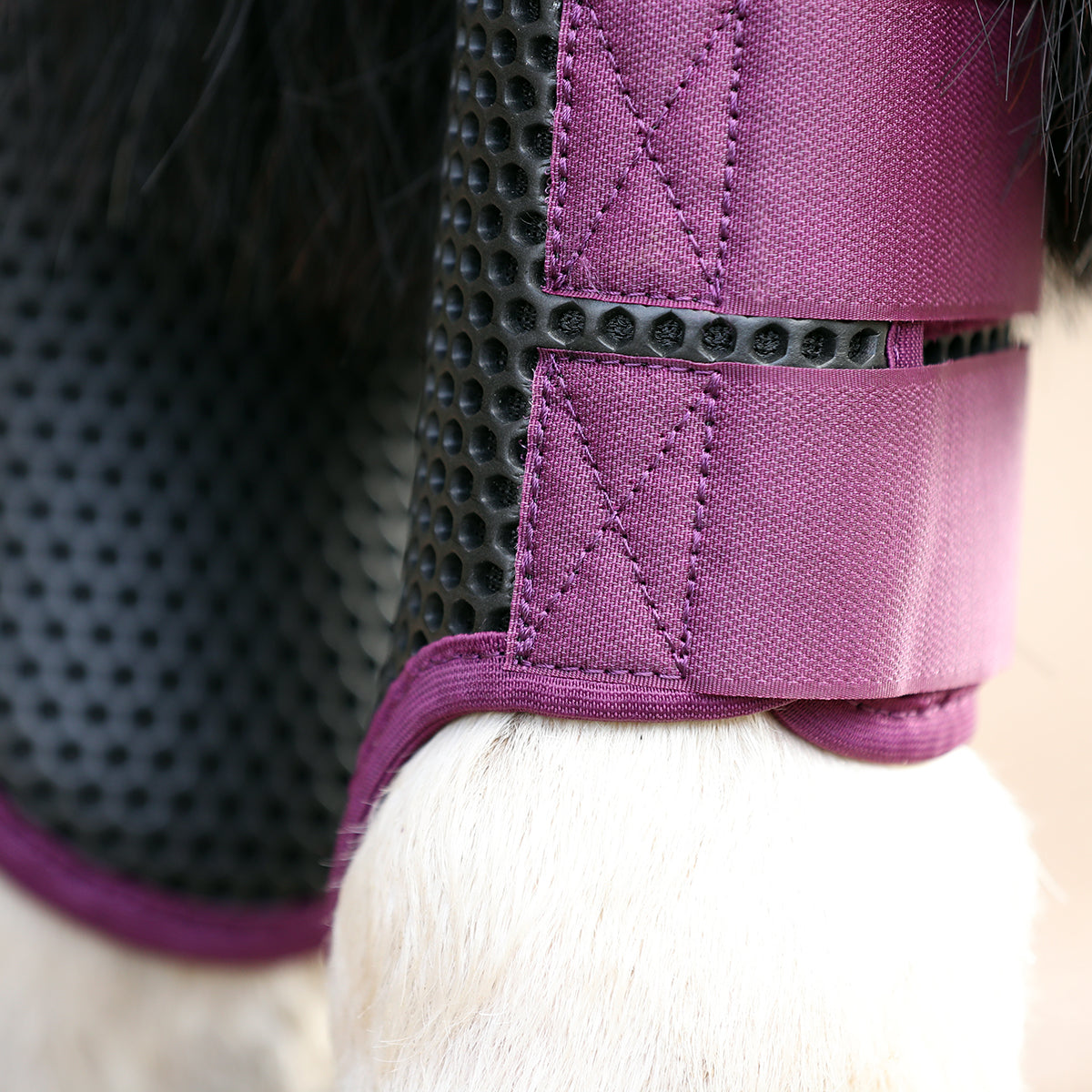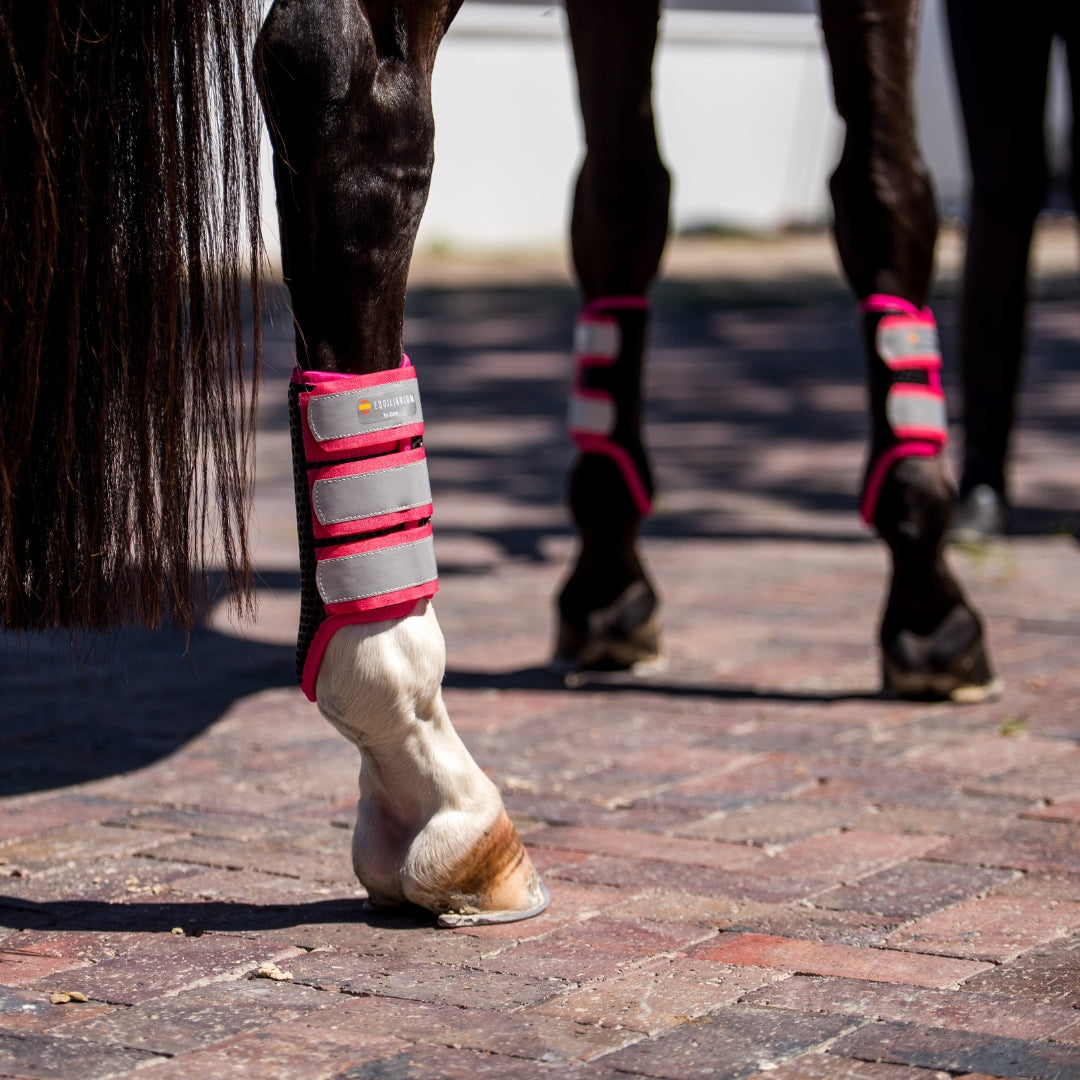Die Tri-Zone-Reihe wird unabhängigen Tests unterzogen, um sicherzustellen, dass jeder Stiefel seiner jeweiligen Aufgabe gewachsen ist – egal, ob es sich um einen Bürstenstiefel oder einen Stiefel für hohe Belastungen handelt. Unabhängig vom Schutzniveau wird jedes Stiefeldesign optimiert, um sicherzustellen, dass es so atmungsaktiv, leicht und flexibel wie möglich bleibt, um Bewegungsfreiheit und Komfort für Ihr Pferd zu gewährleisten.





